Student Researchers Share Insight into Summer Projects
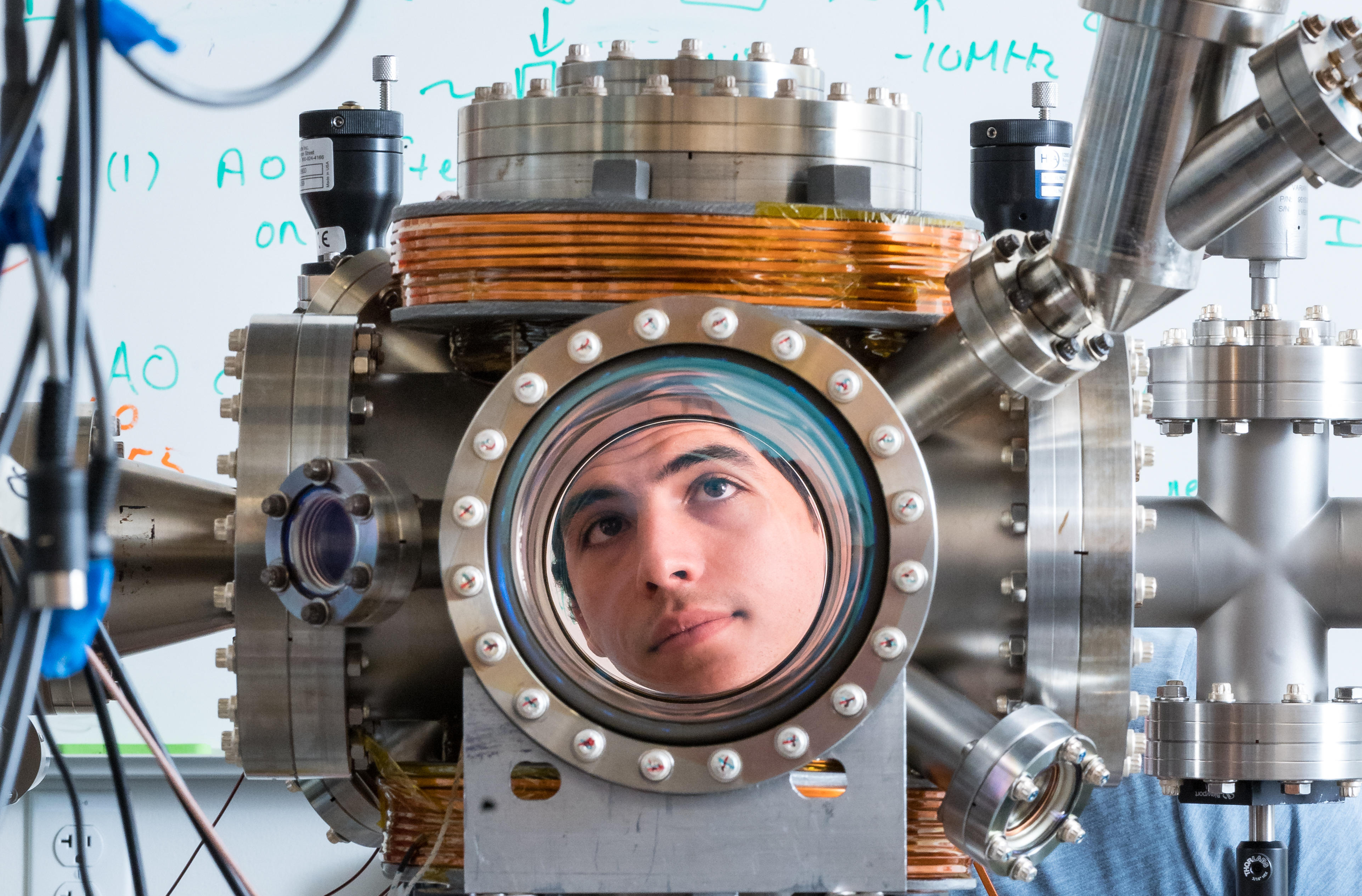
Since 2016, the Chico STEM Connections Collaborative has provided academic and other support services to historically underserved students in science, technology, engineering, mathematics, and agriculture
Over the past five summers, CSC² has supported nearly 300 students in undergraduate research projects across the three colleges—creating a fundamental opportunity that today is the linchpin of the program.
Here, student-researchers share their undergraduate research projects and the program’s incredible impact on them and the world.
Toni Grubesic
Junior, Mechanical Engineering and Physics Major
“Cooling Atoms to Ultracold Temperatures”
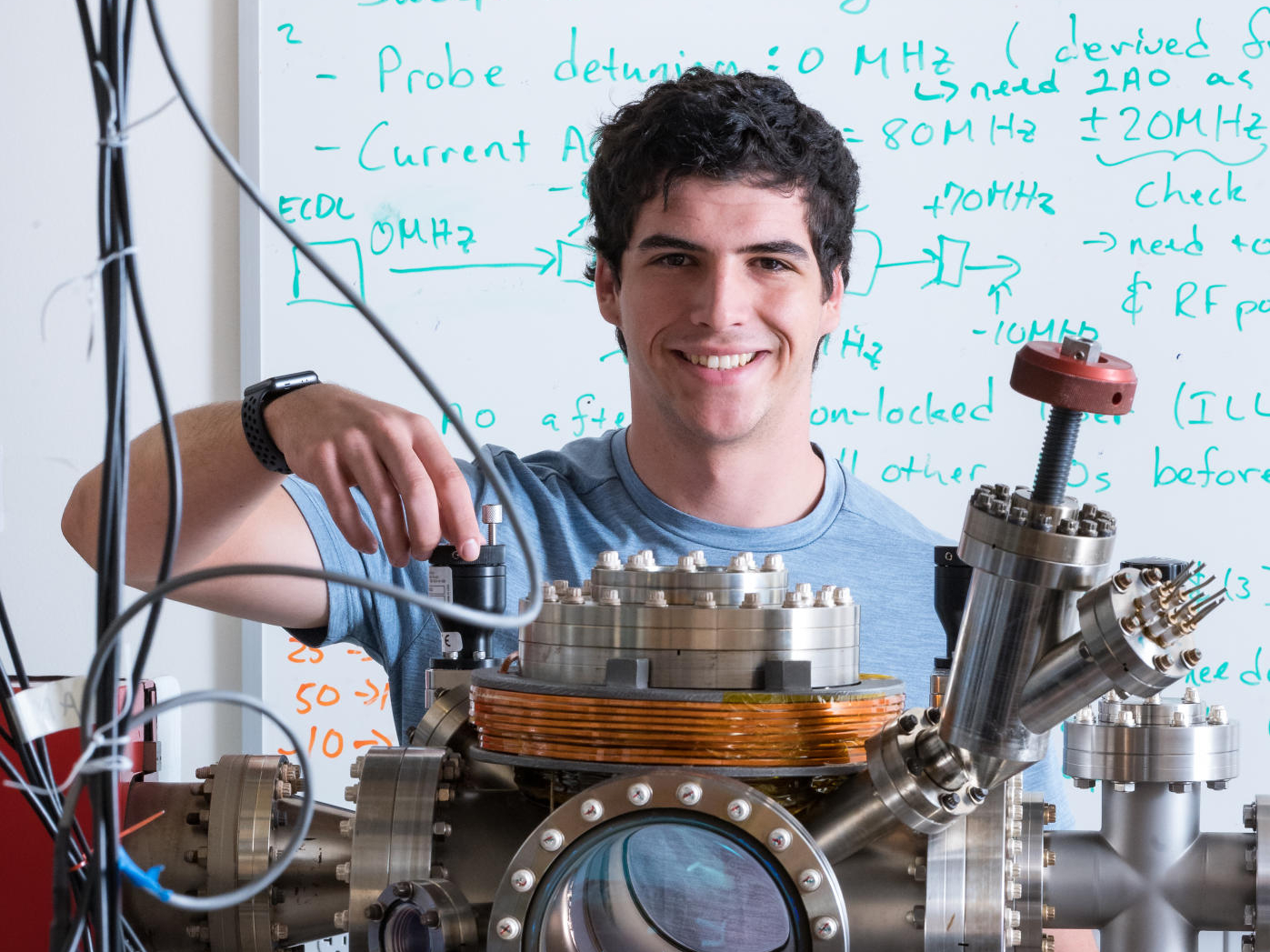
In a project years in the making, Toni worked with Professors Hyewon Pechkis and Joe Pechkis to get the University’s ultracold laboratory into operation. Using a magneto-optical trap, lasers, and vacuum technology, Toni and his labmates were able to pump out all of the air and impurities inside the chamber and reach a final pressure of 0.0000000001 Torr—about the equivalent of the pressure in outer space. They now use it to supercool atoms to the point where they behave more like waves—displaying their true quantum nature.
“In every class, I’m now thinking, ‘How does this fit into the overall experiment? A lot of the things I’ve learned in the classroom, I actually learned here first. And once you learn it in a lab, you can’t look at it the same way. You become infinitely curious about what you are learning.”
Maryza Bustamante
Senior, Mechanical Engineering
“Biodiesel vs. Electric Vehicles—Which Are More Sustainable?”
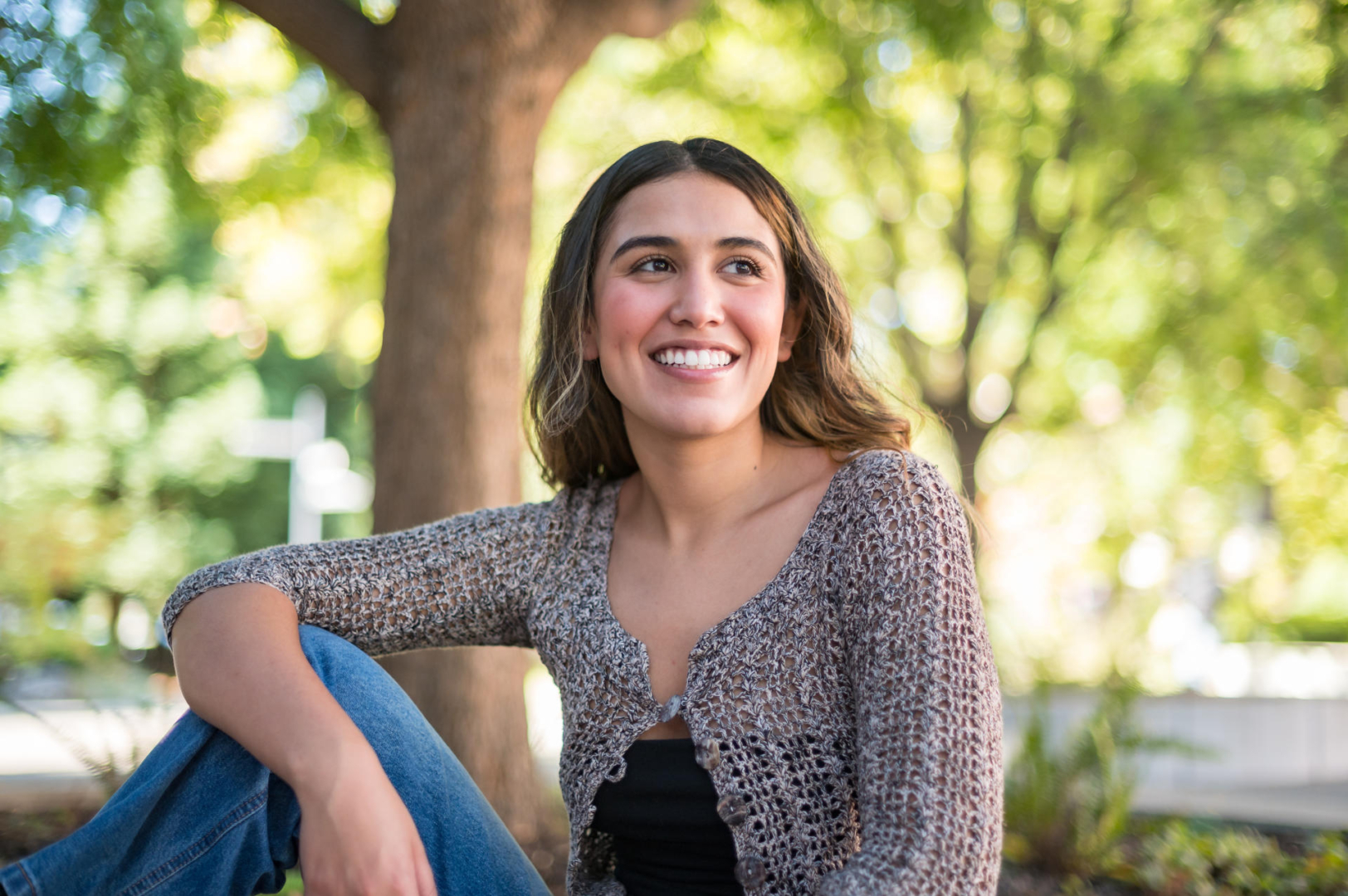
With guidance from Professor David Alexander, Maryza analyzed passenger vehicles from the manufacturing of vehicle parts and everyday use to their eventual disposal or recycling. Using the same model as the Environmental Protection Agency, she examined the vehicle’s fossil fuel use, water consumption, and carbon dioxide emissions throughout its total life cycle. The model uses the estimated vehicle miles traveled, location, average fuel economy, and all-electric range to project the vehicle’s lasting effect on the environment. Their conclusion? Biodiesel might actually have the smaller footprint.
“The betterment of my critical thinking skills has been the most meaningful part of being in CSC². After this experience, I’m more confident in my abilities, more curious about my field, and more determined to go to graduate school.”
Nicholas Esparza
Senior, Biological Sciences
“Effects of PTSD on Memory”
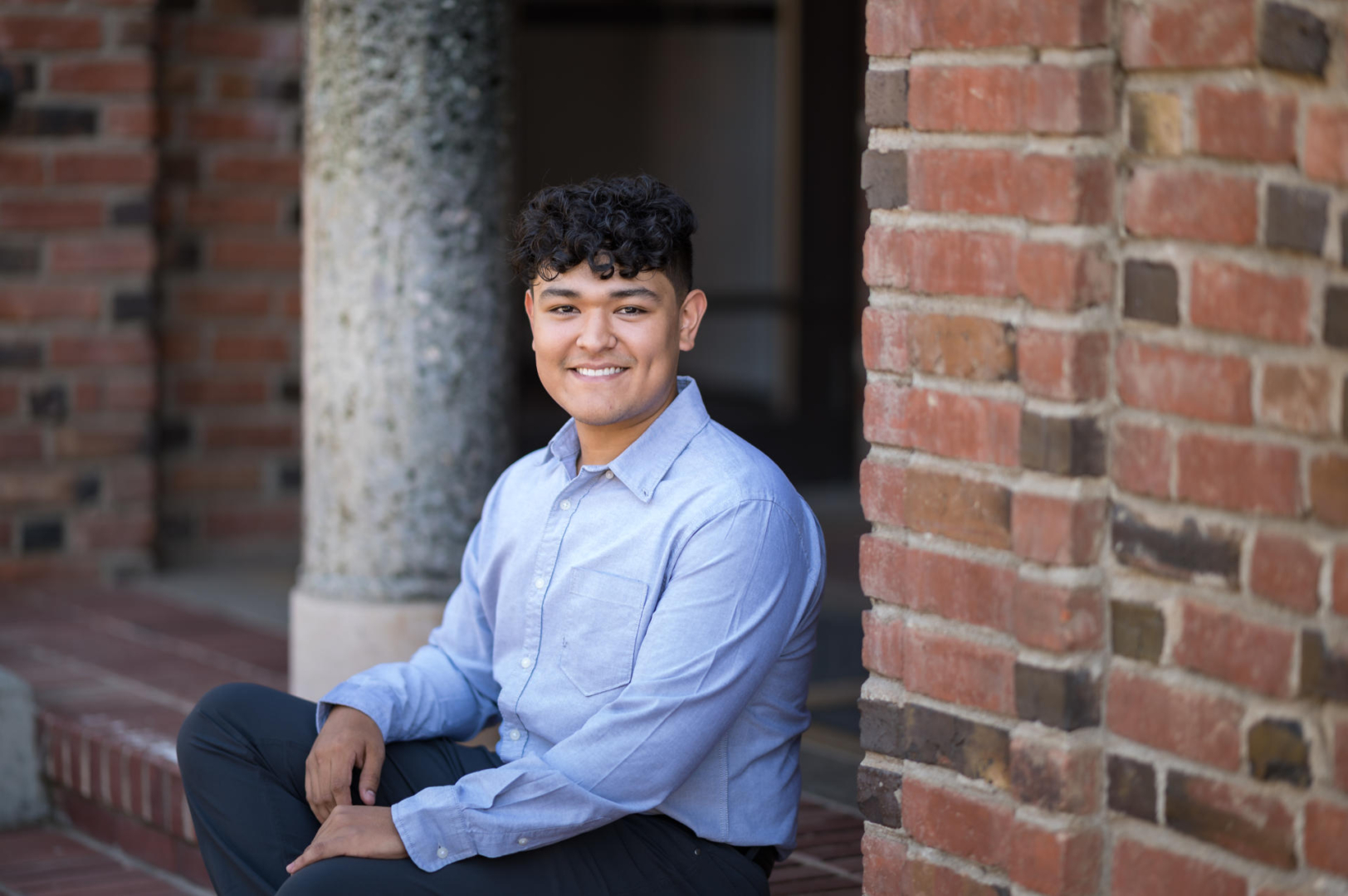
Nic and Professor Kodeeswaran Parameshwaran partnered to study the effects of PTSD on memory using a mice model, with the hopes of identifying how a potential medicine affects memory. By monitoring the fear memory in different mice groups, they saw that activation of receptor proteins through drug injection improves memory to make it less traumatic. After some additional testing, the next step would be clinical trials in humans to help reduce fearful response to traumatic memories.
“CSC² paid us to pursue our dreams. I was always interested in research, but going into Holt Hall and trying to make connections or going into labs was intimidating. This opened the door and made me feel comfortable. I’ve never had that close of a connection with a professor before, and he is now one of my mentors.”
Eddie Anica
Junior, Civil Engineering
“Recovering Resources from Dairy Waste”
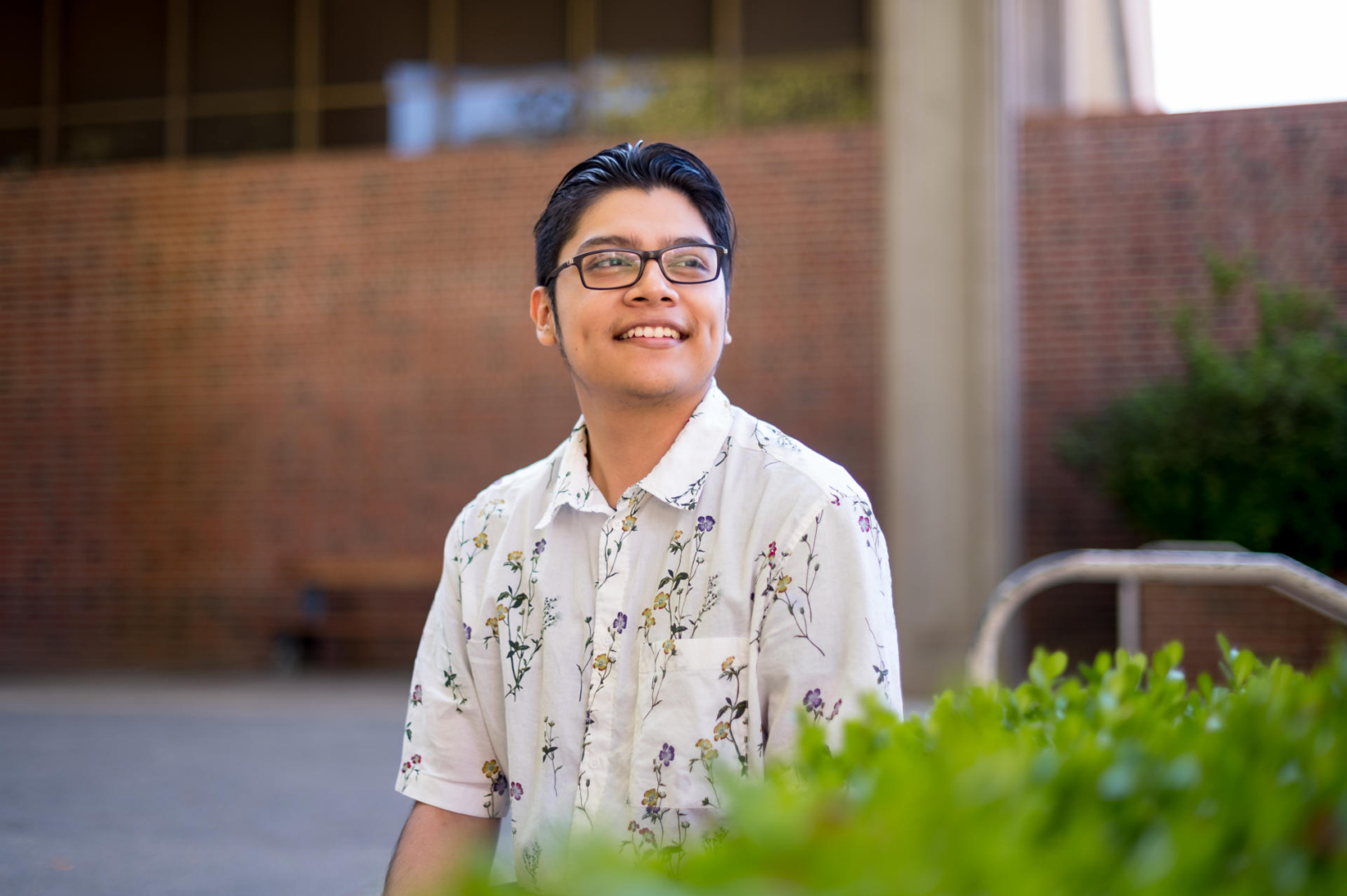
Composting agricultural waste, such as walnut shells, cow manure, and wood chips, can ease the need for synthetic fertilizer, which has doubled in price since 2020, according to research by Eddie and Professor Pablo Cornejo. Studying composting costs in Chile, they determined efficient composting can be an economically viable solution for farmers and promote a circular economy.
“My parents are both from Mexico and immigrated here, and I was born here. Learning English, math, and finding tutors who didn’t only speak English was a big part of my community growing up. It feels really good to be here—my education has never been better. The push toward equity instead of equality is important. I feel I have every resource I need to be successful and then some, and a sense of community.”
Desiree Orozco
Senior, Animal Science
“The Benefits of Cool Cows”
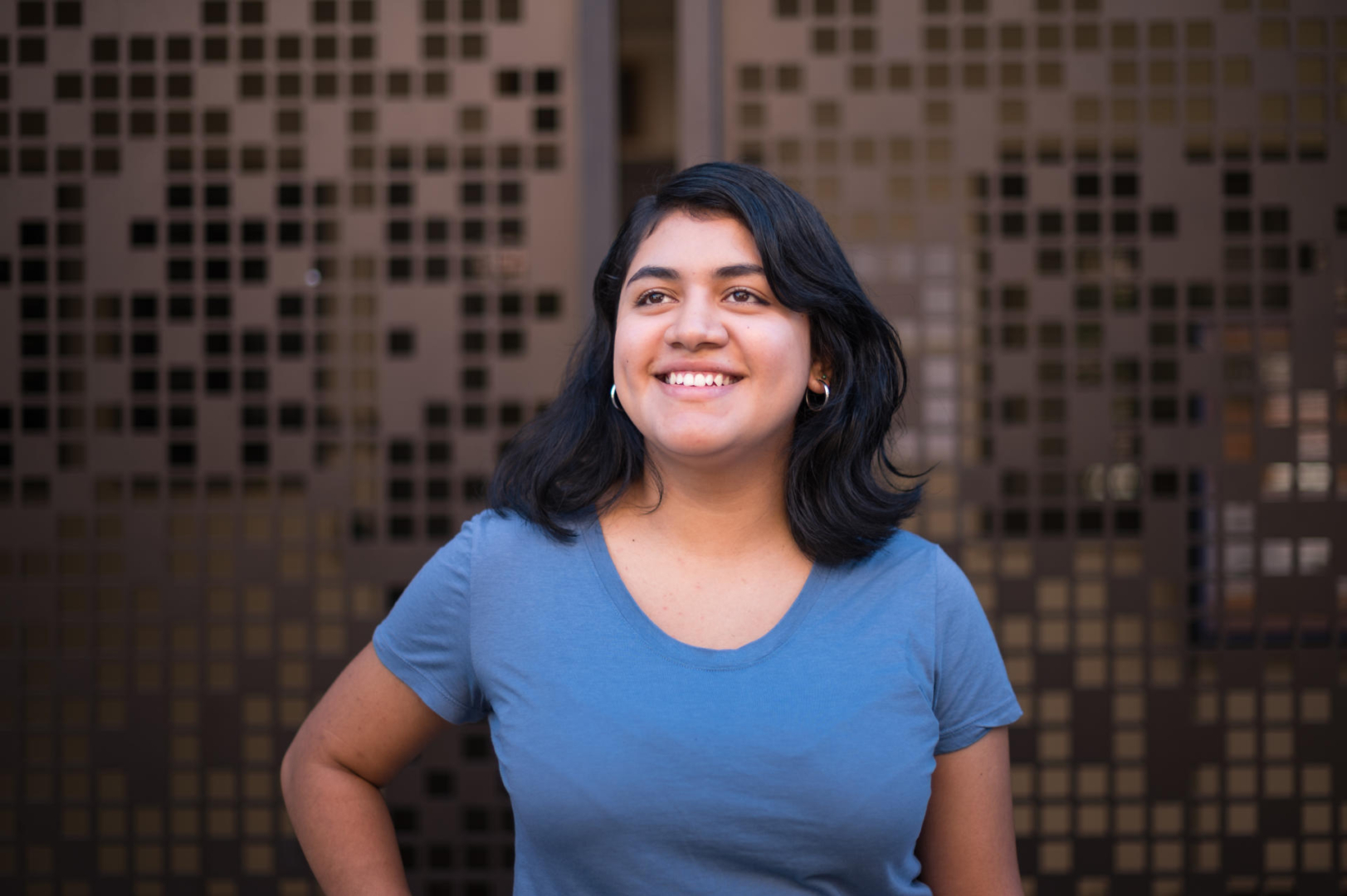
Dairy cows use sprinklers to alleviate heat stress, but do they have preferences for how they like to be sprayed? Confident that cooled-off cows are healthier and produce more milk, Desiree and professor Grazyne Tresoldi looked at how cows position themselves when the sprinklers are on and learned that they adopt various positions depending on the weather. Knowing cows’ preferences may help design more efficient cooling systems while enhancing animal welfare.
“I never thought I would be doing research. Sometimes being first gen is difficult since our family can’t help or might not understand the difficulties of attending college, but CSC² has always been there to give that support we might be missing. I remember my first day walking to campus and asking the CSC² staff for help—it created many connections and friends which have helped me through some rough years.”
Christian Garcia
Senior, Civil Engineering
“Upcycling Olive Waste to Protect Aging Roads”
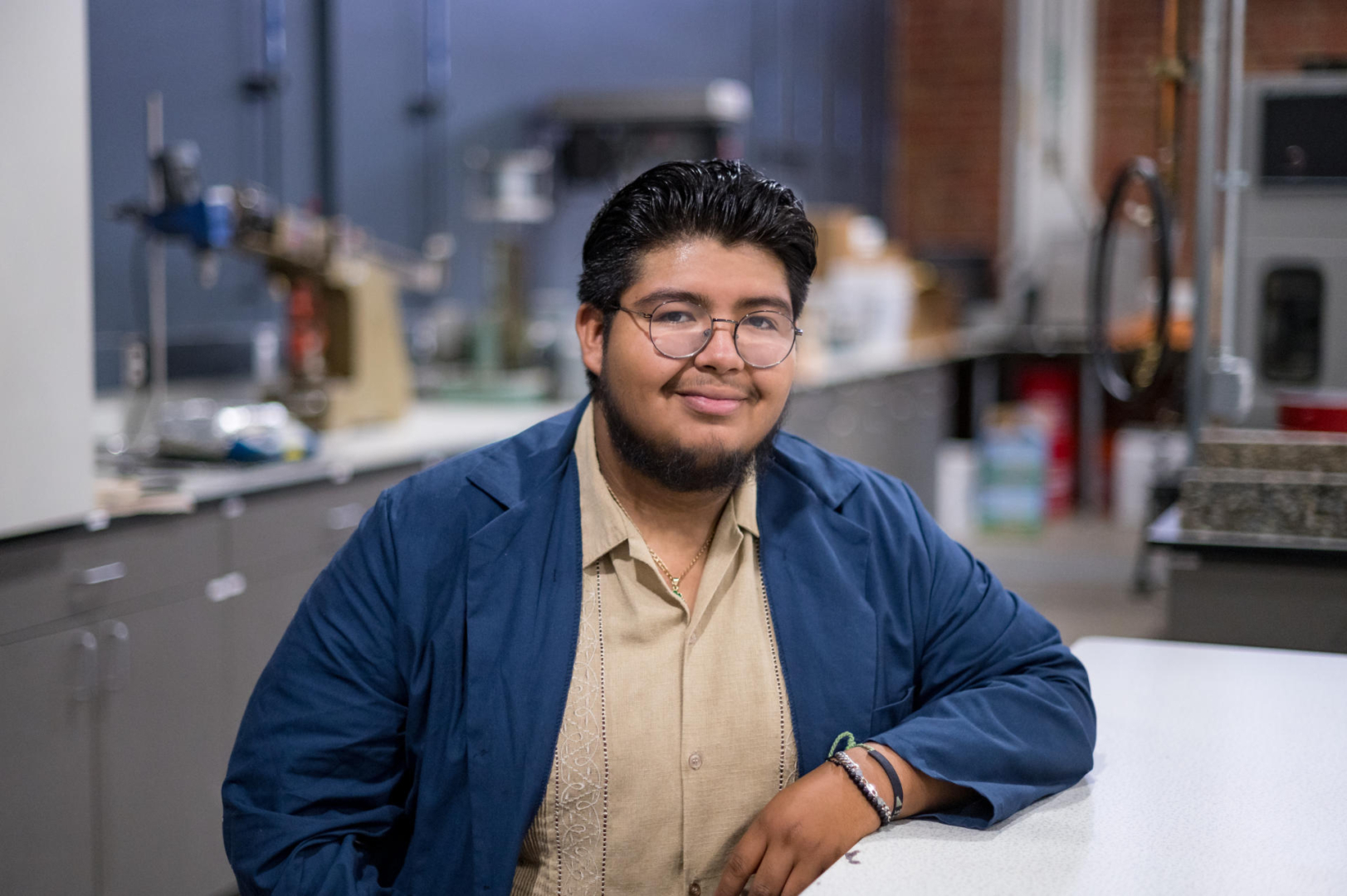
Under the mentorship of Professor Kun Zhang, Christian determined that olive pomace, the byproduct of olive oil production, can act as a sustainable antioxidant and recycling agent in asphalt. Testing it under various ultraviolet conditions, the research—which is more than 10 years in the making—showed pomace’s softening effect could help extend road life by providing resistance to fatigue and cracking damage.
“In addition to our expert faculty, CSC² has so many connections to alumni who go out into the workforce and come back and recruit. It shows they care for the Chico students and want us to continue expanding on our journey. They know what we have been through, and they want to help us get there.”
Wajeeha Hussain
Junior, Biological Sciences
“Using Bacterial to Break Down Environmental Pollutants”
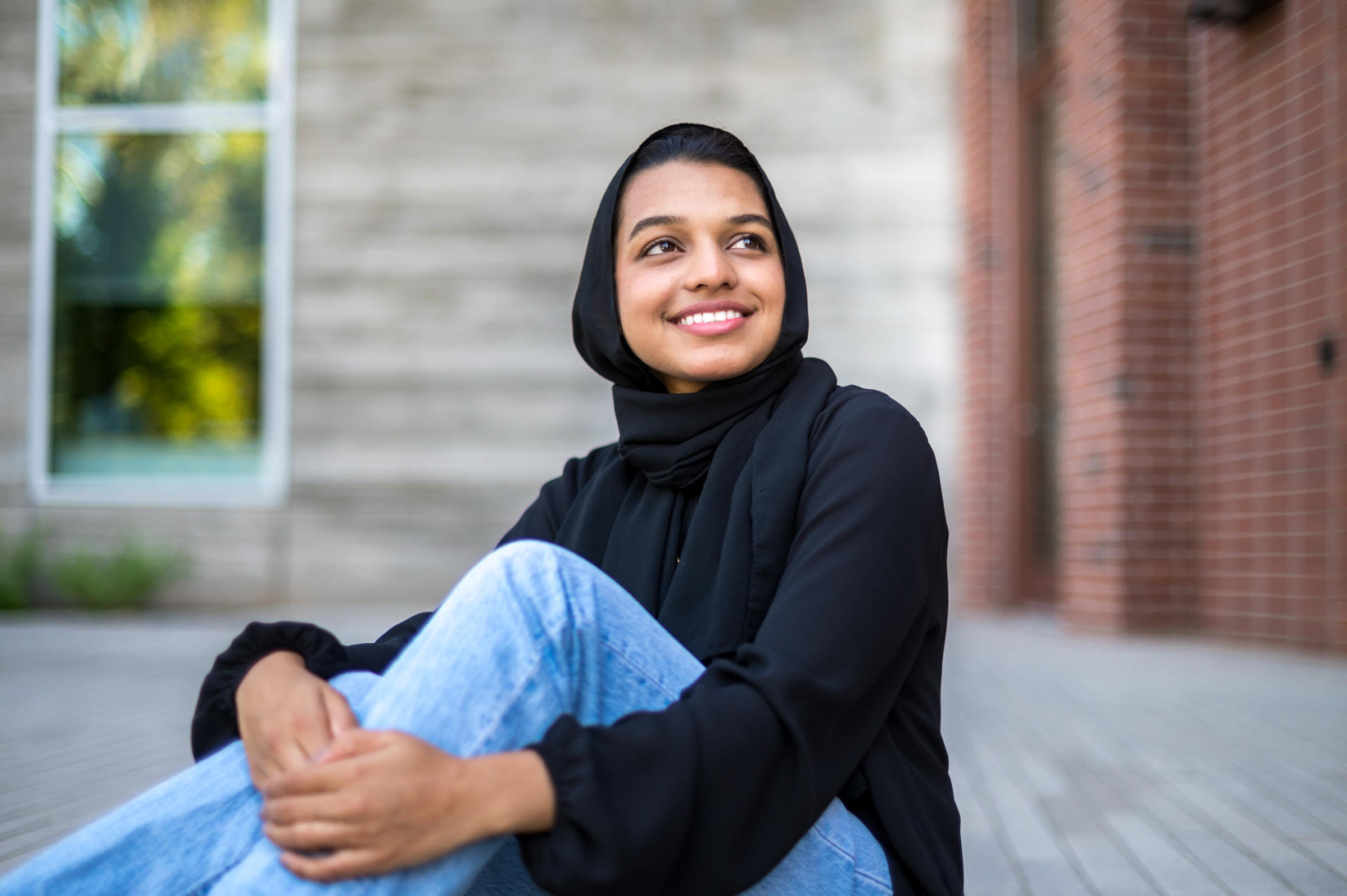
Together with Professor Kati Geszvain, Wajeeha explored three different strains of bacteria that can break down “Congo red,” an industrial pollutant that is a byproduct of the textile industry. One of the three bacterial strains was successful, but they found a second unknown bacteria as a “happy accident” that proved to also be effective. They hope their findings will support sustainable ways to break down environmental pollutants as an alternative to chemicals.
“I am happy that I got an opportunity to work in a lab as an undergrad. Working with bacteria was fascinating and a little challenging because we had to deal with a lot of contamination. I learned that sometimes getting false results doesn’t mean you should feel discouraged. Also, at the end of the project, I had to present in front of many students and professors, which helped boost my confidence. I think anyone who’s interested in research should give it a try.”
Eulises Lopez
Junior, Computer Science
“Crowdsourcing Pothole Repairs”
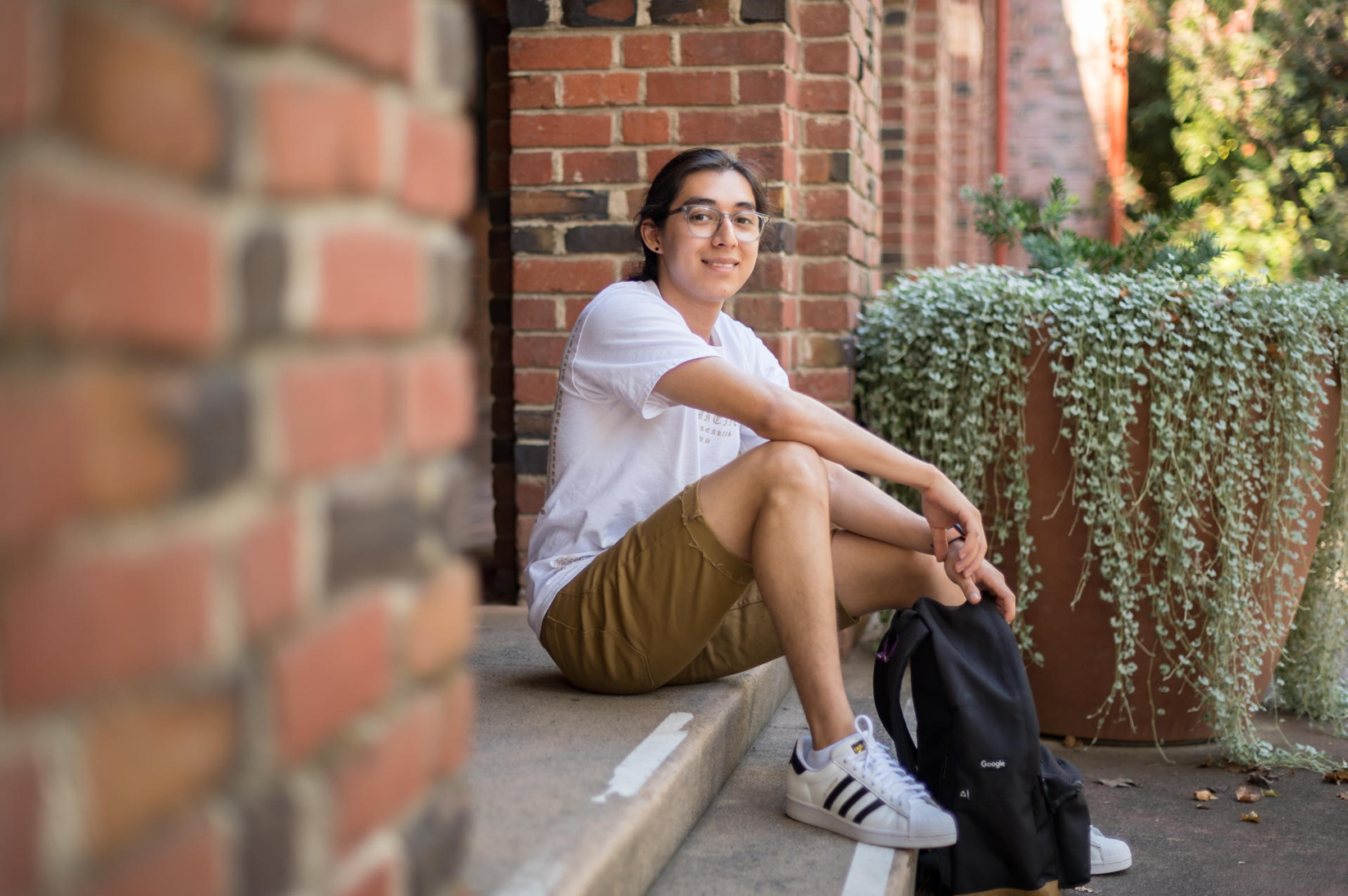
Leading a team under the guidance of Professor DingXin Cheng, Eulises learned a new programming language to develop an app that would allow everyday users to photograph potholes and upload them to a database to improve the quality and safety of local roads. In collaboration with the University’s California Pavement Preservation Center, government agencies could then use the app to identify the location and magnitude of a pothole problem, the cost for repair, and a timeline for maintenance.
“CSC² really includes us as part of a family and also helped me think about the job I want to do after graduation, moving into machine learning, so I can now explore the different fields of my major. The program gave me the exposure to lead a professional team and be a competent employee. It also gave me opportunities that helped me grow as a person and as a professional.”
Pablo Curiel
Senior, Applied Mathematics
“Mathematical Modeling of Mite- and Virus-Afflicted Honeybee Colonies”
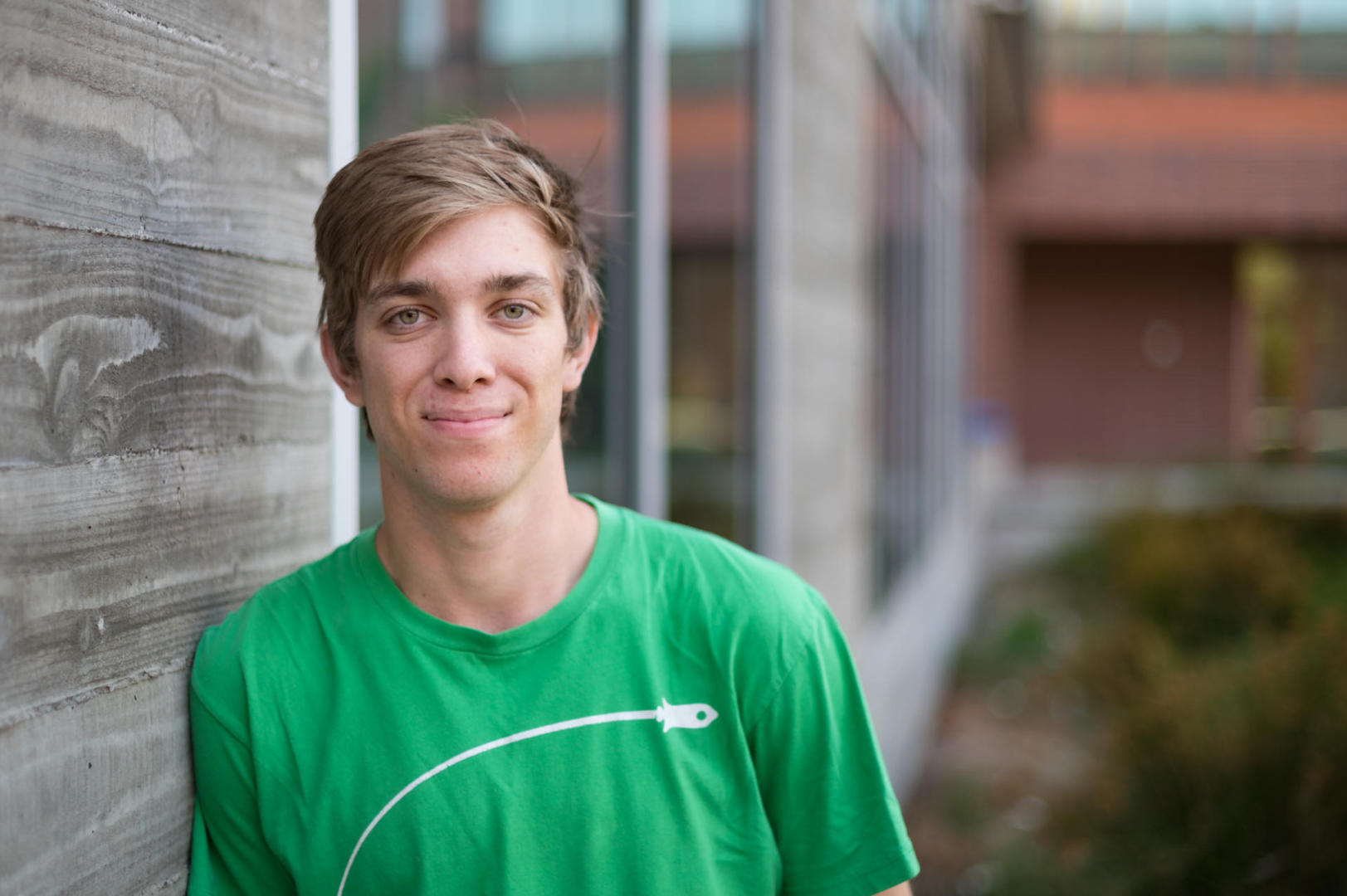
Using a mathematical model of a honeybee colony infested with mites and viruses, Pablo worked with Professor Vardayani Ratti to conduct sensitivity analyses to determine what physical factors most affect the colony population. They learned colonies are most affected by the ways mites and viruses impact birth rates, death rates, and brood maintenance. Also, honeybees are highly dependent on temperature, so they began the process to extend their modeling to include real-world climate data to provide a more comprehensive look into temperature impacts on colony health.
“This is the math that I like to do—that you apply to problems. It reinforced my education and career goals to become a university professor. With CSC², I also found it very exciting to learn about what other people are studying. As a math major, I’m not the most social person, and in this program I got to interact with a lot of people from so many disciplines.”


